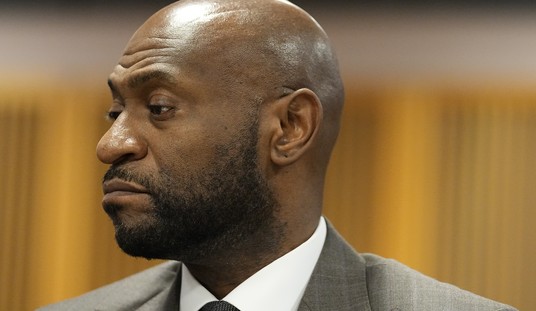LONGMONT, Colo. (BP) -- I was fortunate to meet Don Rutledge in my early days as a photographer when I was working for the Southern Baptist Foreign (now International) Mission Board.
I had just started to receive assignments photographing mission work overseas. After an assignment, Don would spend hours going over photo contact sheets with me. He was a gentle teacher, patiently explaining why one photograph "worked" and another didn't. He would point to a particular photograph and say, "Now, this is the 'old Joanna,' but this one" -- pointing to another picture he thought was more successful -- "is the 'new Joanna.' Can you see the difference?"
He'd explain about depth and layers. He would often say that many times the difference between a good picture and a great picture can be just one millimeter. He was never too busy to help and answer endless questions. He always looked for the positive and guided you to see in a new way.
Don would always encourage me to try new things, to stop, to really look, to test boundaries and push past my fear of stretching into new areas. When I'd achieve a breakthrough in one area, he'd applaud my accomplishment. When I got stuck in a rut, he'd tell me, "OK, you've got that. Now you need to try something new."
There are so many things I try to do today that "mirror" Don and his approach to photographing people. Here are three:
Recommended
-- Always enter with a warm smile and quiet manner.
-- Treat everyone with respect.
-- See the world through your subject's eyes and know they are a child of God.
Don treated his subjects with dignity. He always said it is important to photograph people in their normal way -- that is, not to accentuate something just because it might seem different to you but is typical for them. He often used the example of a picture he took of a motorcycle parked inside a family's house. He photographed it as a part of the normal scene without exaggerating it. In this way he helped us understand something about the family and their lives. Because Don photographed it normally, we accept it as such.
One of my favorite pictures of Don's was of an Eskimo family at their home above the Arctic Circle in Alaska. It hangs on my wall, so I see it every day I am at home. In it, each family member has a different expression and body language. A Native American woman dressed in a patterned summer dress stands on the porch of her clapboard house holding a little boy while another child pokes her head out of the door, her fingers stuck in her mouth. Another young girl stands on the porch, leaning out and holding on to the doorframe. A slightly older girl stands just beside her, bending to her right almost as if she is holding on against the wind. In the far left of the photograph, still another girl peers out of a window, her mouth slightly open in a sort of greeting. The house has tarpaper tacked in places. A mop leans in a corner where the house line bends. The right side of the image is framed by a lake and grassland.
Your eye moves easily through the photograph, starting with the woman on the porch. She is smiling and everyone seems to be gathered to welcome visitors. The way Don framed the photograph and captured each expression draws us in; we, too, feel welcomed by this family. I never tire of examining this picture and wondering about the lives of the people there. They live on through Don's eye. Here is the photograph:
Larger version here.
Don's images bring you into a scene as if you are there. Usually you are not aware of his presence; the people in the picture are going about their day, working, interacting with others or perhaps at rest. A smile, a tilt of the head, a body position tells you a lot about the subject's demeanor and personality, revealing a mood. His framing was deliberate. In many scenes the people are very much in their own world and you are getting a glimpse into their lives. He captures relationships between people as well as their quiet moments. His acute attention to body language and the fleeting moment reveals so much. He knew how to be in the right place at the right time.
Don was a great storyteller; he helped me to understand how to build a story visually, image by image.
He always had a twinkle in his eye -- especially when he was about to tell a good story about his travels or the writers he worked with. He also had a convincing way of looking innocent when the "incriminating" stories were about him. I never had the opportunity to travel with Don since I'm also a photographer, but when he and a writer would get back from a trip, I loved to hear about what new pranks Don had been up to.
What meant so much to me besides Don's practical advice and guidance: He believed in me as a person and as a photographer. He encouraged and truly mentored me. He believed I could become a good photographer and visual storyteller.
So I did, too.
Joanna Pinneo, now based in Longmont, Colo., has photographed stories in more than 60 countries for numerous magazines and books. Assignments have taken her to Egypt, Sudan, India, Northern Ireland, Latin America, China, Africa and the Middle East. Her photograph of a child sleeping with its mother in Mali, West Africa, is included in the iPad App "The 50 Greatest Photographs of National Geographic." Pinneo was nominated for a Pulitzer Prize, won an Alfred Eisenstadt award and is featured in National Geographic's "100 Best Photographs." Her work has appeared in the New York Times, TIME, Geo, Stern, U.S. News & World Report, Mother Jones and American Photographer, among other publications. Pinneo is the founder of "Grrlstories," a project dedicated to giving girls a voice through photography. She is working on a long-term project about kids connecting to nature and the outdoors. Get Baptist Press headlines and breaking news on Twitter (@BaptistPress), Facebook (Facebook.com/BaptistPress ) and in your email ( baptistpress.com/SubscribeBP.asp).
Copyright (c) 2013 Southern Baptist Convention, Baptist Press www.BPNews.net

























Join the conversation as a VIP Member